Learning that Sebastopol’s Manzana Products Co. is Sonoma County’s last surviving apple processing plant inspired me to research a handful of related businesses that preceded Manzana. When and where did these businesses exist? Who, and how many people, did they employ? What fruits and vegetables did they process? Where did it all go? How did it get there? When and why did they cease operating?
To begin answering these questions I spoke with local historians, reviewed county histories, historic maps, photograph collections, and newspaper articles. The following is a small taste of what I discovered.
It was in the Healdsburg Museum’s online photograph collection that I came across an undated image of the Magnolia Cannery. This cannery was established in 1889 and was located on the current site of the Longboard Vineyards’ tasting room at 5 Fitch Street.
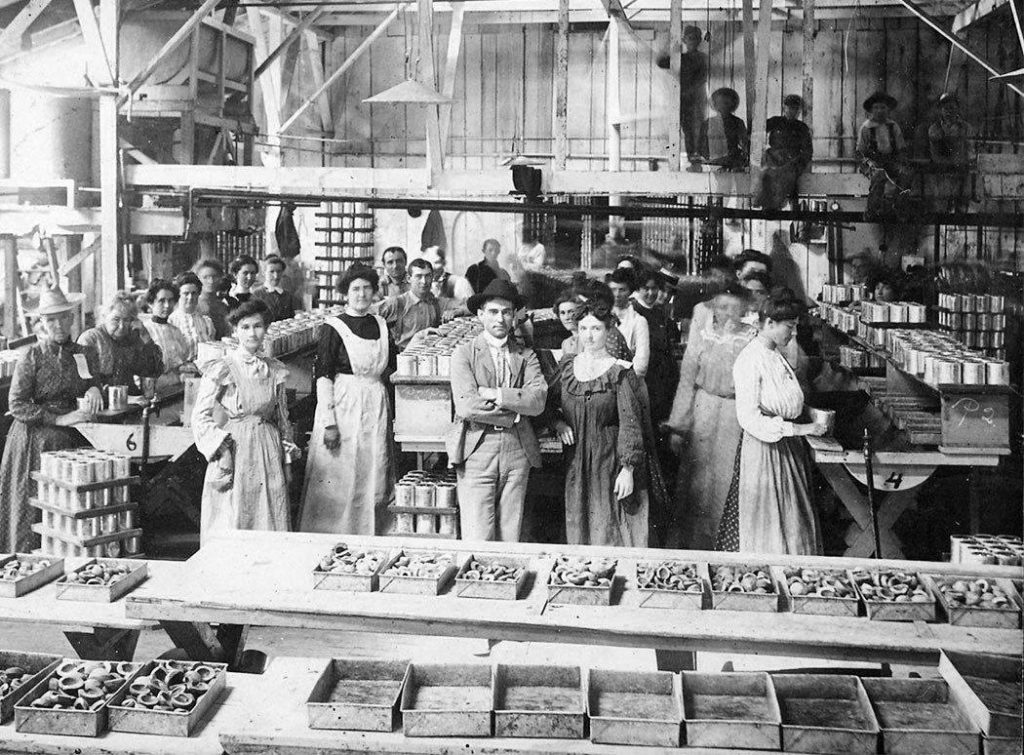
The founder of the Magnolia Cannery was Thomas S. Merchant, an Australian born in 1841. His father came to the gold fields of California in 1849. Thomas, his mother, sisters and brothers followed in 1851. The family settled in San Francisco.
After the death of his first wife in 1880, Thomas Merchant moved to Sonoma County and purchased a ranch on the Russian River. In 1882 he married Mary Hobson and in 1886 they moved to Healdsburg. Before establishing the cannery, Thomas was employed by a number of wholesale firms selling gloves, biscuits, candy, produce, wine and many other products throughout California.
According to an excellent article “Healdsburg’s Cannery Row: An Overview, 1890-1920” written by Claire Rithner[1] in 1994 for the Russian River Recorder published by the Healdsburg Museum and Historical Society, Healdsburg had four other fruit processing plants in addition to Magnolia during the 1890s – the Van Alen Cannery, the Dirvin Cannery (later known as the Enterprise Cannery), the Russian River Packing Company and the Healdsburg Canning Company.
When the Magnolia and Healdsburg Canneries sold to Fontana & Company of San Francisco in 1896, they were described as the largest fruit packing houses in Sonoma County by the San Francisco Call.
A short history of Santa Rosa’s Hunt Brothers Fruit Packing Company is included in architectural historian Susan M. Clark’s 2003 historic resource evaluation of the former California Packing Corporation Cannery located at 3 West Third Street, Santa Rosa. Incorporating the remaining walls of this building is part of a current plan to redevelop this site for multi-family housing.
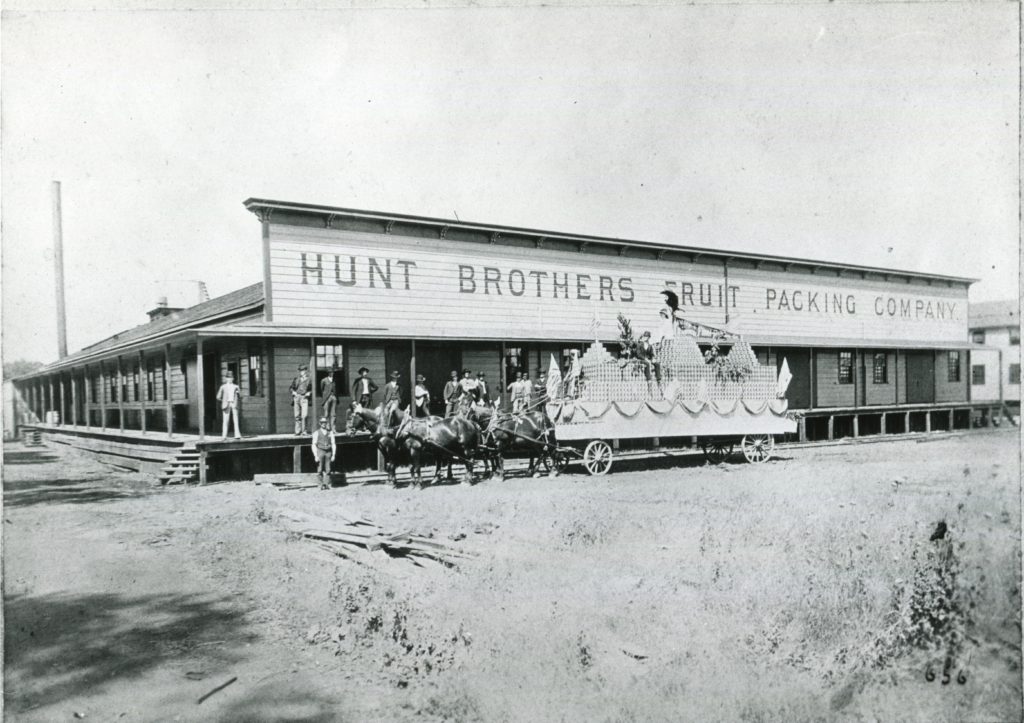
Clark states that Sonoma County’s food processing industry originated in the 1880s with William J. Hunt of Sebastopol. Hunt was the first person to use a dehydrator to dry Gravenstein apples in bulk. In 1887 William’s son, Joseph, started the cannery and packing plant in Santa Rosa. In 1891, John and his brother, William, Jr., became partners.
In 1896, the Hunt Brothers moved their operations to Hayward. Their Santa Rosa plant was taken over by the Rose City Canning Company. Rose City Canning was one of three Sonoma County packing companies to join the California Packers’ Association in 1899.
The California Packers’ Association was composed of some of the largest fruit packing establishments in the State, and they aimed to control the prices of canned fruits.
Of the eleven officers of the association those representing Sonoma County canneries were: W.J. Hotchkiss, Russian River Packing Company; A.D. Cutler, Cutting Fruit Packing Company; and J. Streining of Rose City Cannery.
Healdsburg’s Russian River Packing Company began operations in 1891. The San Francisco Examiner reported on August 20, 1894 that nearly 700 people were employed at this packing company, while neighboring Magnolia and Healdsburg Canneries, had 500 workers on hand.
In 1911 the Russian River Packing Company, managed by E. B. Snook, was taken over by J.K. Armsby Company who owned several packing houses throughout California.
The Rose City Canning Company incorporated in 1896 and as mentioned previously was located on West Third Street, Santa Rosa. The directors were J.D. Barnett, L.W. Burris, John M. Streining, W.S. Davis and A.J. Streining.
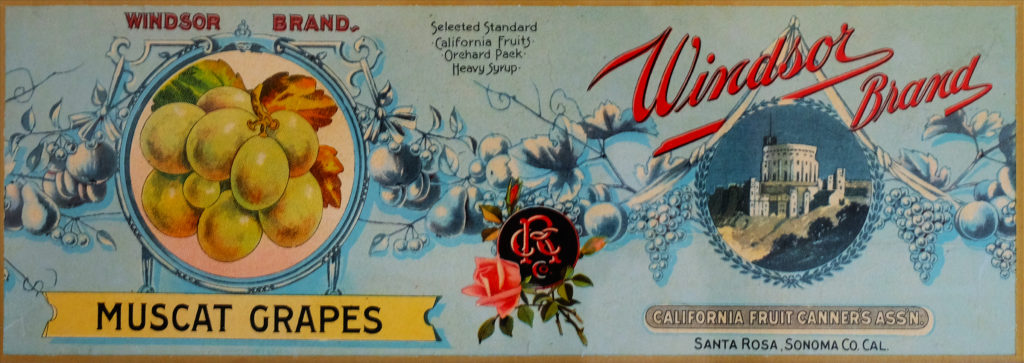
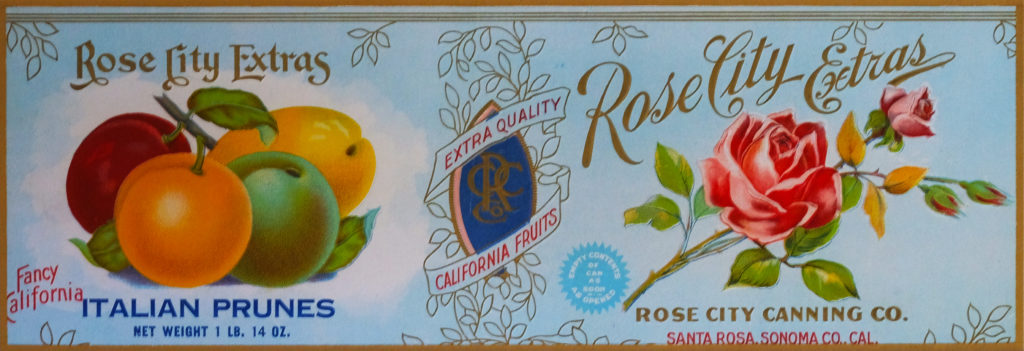
Rose City partnered with the Santa Rosa’s Cutting Fruit Company, which also had facilities in San Bernardino County, San Francisco and Santa Ana, to build a new plant in 1900 in Santa Rosa’s West End Neighborhood.
In 1918 Sam Sebastiani constructed a cannery adjacent to his winery on 4th Street East in Sonoma. This plant shows up on a 1923 and 1941 Sanborn fire insurance maps as the Sam Sebastiani Fruit and Vegetable Cannery.
Patricia Cullinan, president of the Sonoma Valley Historical Society, recalled that the Batto family had a dehydrator and packing sheds on Denmark and 8th Streets. I addition to drying fruit from their own orchard, the Battos imported pears from Ukiah and Kelseyville – buying the seconds for cutting and dehydrating.
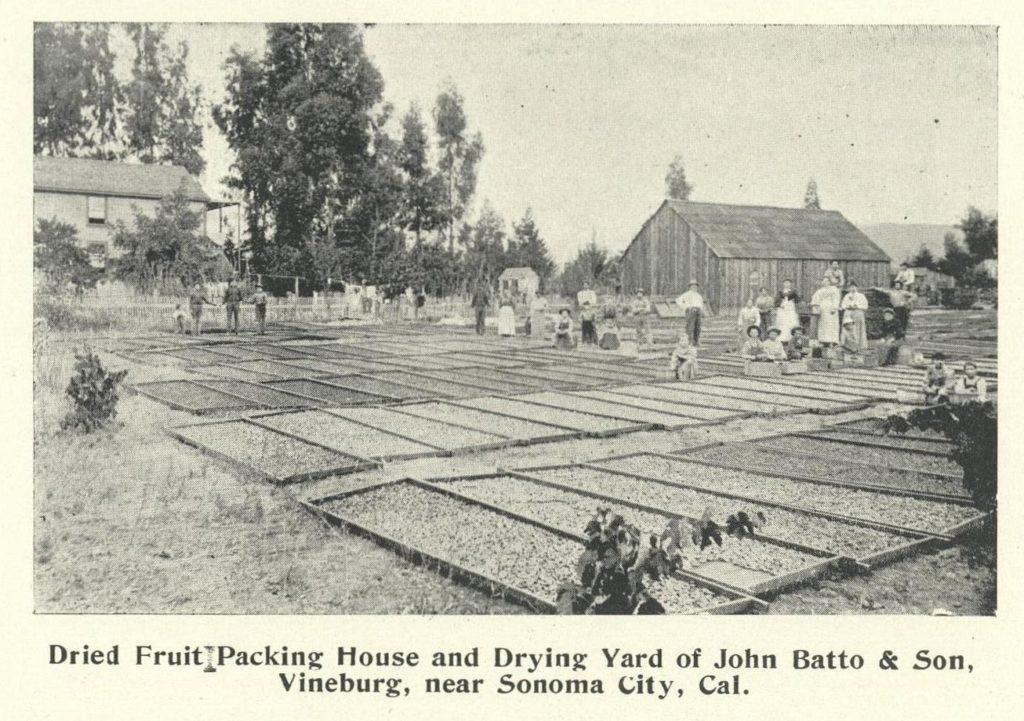
There was still a cherry harvest in Sonoma when Patricia was growing up in the 1950s and 1960s. She and her cousins all picked fruit in the summer for money. Many of those Sonoma grown cherries were shipped by rail to the Lyon-Magnus maraschino cherry processing plant in Sebastopol.
Sonoma apples were also shipped by rail to Sebastopol canning and packing plants.
This is just a sampling of Sonoma County’s agricultural processing history. Because of the efforts of the Healdsburg Museum, the Sonoma County History & Genealogy Library, the Sonoma Valley Historical Society, and others whose mission it is to safe guard the records of our past, a trainload of information is available for further research.
[1] Claire Rithner received her Master’s in History from Sonoma State University in 1997. The title of her thesis is Migrant Farm Workers, Growers and the Healdsburg Community, 1941-1945. Hard copies are available at the Sonoma County History & Genealogy Library in Santa Rosa, Healdsburg Regional Library and the SSU Library. It also available digitally via ScholarWorks.
A version of this article appeared in the September 2020 Sonoma-Marin Farm News a publication of the Sonoma County Farm Bureau
 Throw Back Thursday: The Armstrong House, Petaluma, Calif.
Throw Back Thursday: The Armstrong House, Petaluma, Calif.